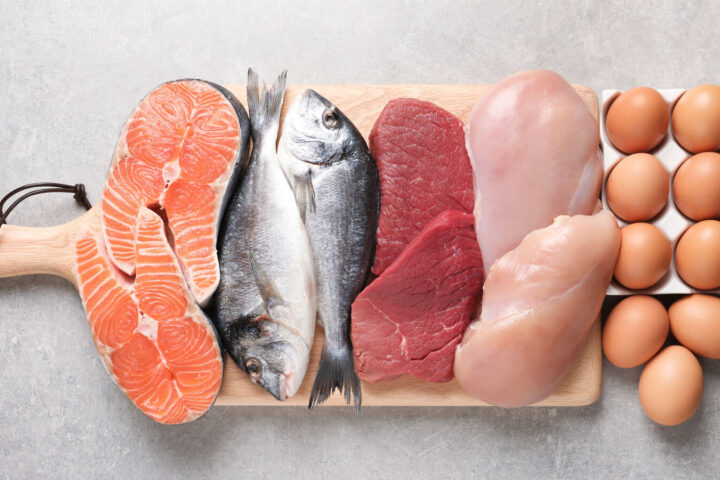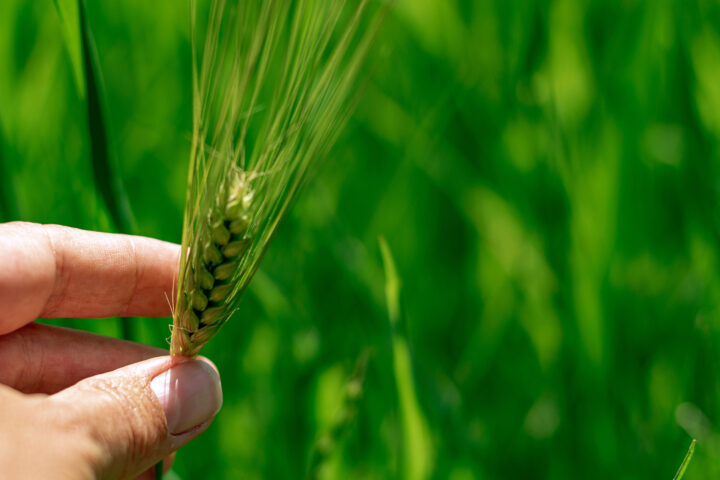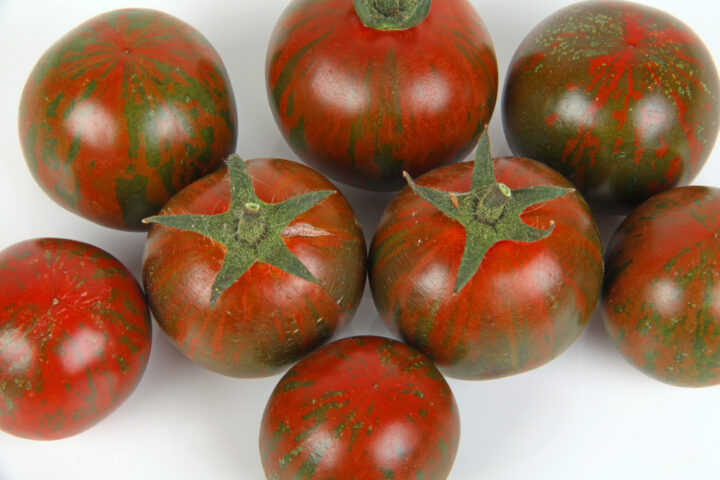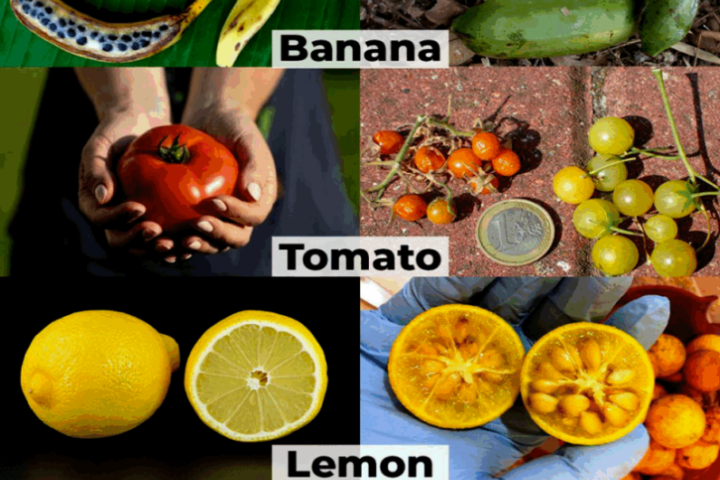
On the way to the optimal tomato
Whether as juice on a plane, pureed on a pizza or in slices on a sandwich, tomatoes are on everyone's lips. An article from the German "Lebensmittelmagazin" shows how the tomato variety comes about and how the tomato of the future tastes.
Tuesday, March 21, 2023
Every Tuesday and Friday, Christian Ott has his vegetable stall at the Türkenmarkt on Maybachufer in Berlin-Kreuzberg. Now in August, tomatoes are in high season. His yellow tomatoes, green zebra tomatoes, heavy, fleshy ox hearts, sweet little cherry-egg tomatoes, elongated bottle tomatoes, but also dark Kumano and, of course, classic vine tomatoes shine for several metres. They come from Ott's own cultivation. His tomato plants stand on topsoil under a roofed glass ventilation system. So the harvest comes in until late autumn, as long as frost and fungal diseases stay away from the plants.
Good lycopene and unpleasant solanine
Every German eats more than 27 kilograms of tomatoes a year, two-thirds of which are processed into tomato paste, tomato sauce or ketchup. This even has its health benefits, because the body absorbs secondary plant compounds such as lycopene much better from cooked tomatoes than from raw ones. On the other hand, the plant toxin solanine causes headaches. Whether cutting away from the green tomato stem is actually relevant to avoid solanine remains speculation. The signs of solanine poisoning, which can appear after 4 to 19 hours after consumption, manifest themselves in headaches and stomach aches. Especially unripe tomatoes have an increased solanine content. By the way, the poison is heat-resistant, so it cannot be boiled away. However, it is wrong to say that this applies to all green tomatoes: Evergreen, Green Zebra or Green Grape are actually tomato varieties that remain green even when ripe, i.e. with only a very low solanine content.
Not just since Columbus
The tomato came to Europe shortly after Columbus arrived in America via the Spanish transport routes. In fact, however, the tomato, like other nightshade plants such as peppers, aubergines, potatoes and physalis, has been a cultivated plant for much longer. In Patagonia, scientists were able to find 52-million-year-old fossils of the paper husk of physalis at the Laguna del Hunca in Argentina. Since physalis is evolutionarily younger than the tomato, it can be assumed that the tomato is even older.
Growing tomatoes under optimal conditions
Nico van Vliet is responsible for close contact between farmers and the trade at Bayer's Crop Science Division. "The direct communication in such a pool ensures that we can react directly if necessary, so that we don't have to wait for feedback from the trade via the farmers," explains the trade partnership manager. Bayer is the world's largest supplier of vegetable seeds. The tomato seeds that come from their company are characterised by resistance to plant diseases such as fungal infections. Together with the seeds, information about cultivation, such as irrigation and fertilisation for optimal harvest results, is provided directly to each farmer. "If a plant disease should nevertheless appear in this way, it can be treated stationary with biological, and rarely also chemical, means according to ecological standards, instead of large-scale use of plant protection products," says van Vliet.
This applies to cultivation on covered arable land as well as on rockwool, he adds. "In general, we recommend rockwool in high-tech greenhouses. But also with arable soil, we first give farmers a sample of the respective seed for testing," says van Vliet. But this is also a question of resource use: "For one kilogram of tomatoes, we need an average of 10 litres of water on rockwool, which is reused in the recirculation system. On the arable land, about 80 litres of water are needed for one kilogramme of tomatoes, but most of it seeps into the soil," Nico van Vliet points out. Especially in terms of sustainability, rockwool is forward-looking for the manager.
Tomato trends
The basis of his work is the analysis of the market and the recognition of trends. One example of this: In the course of plastic reduction, completely new demands are being made when buying tomatoes. In the past, tomatoes were offered in hygienic, protective plastic packaging. Today, on the other hand, it is more often the case that tomatoes come packed in a paper bag at most in the shopping bag and when they arrive at home, four or five tomatoes are already mushy and are disposed of directly.
Waste avoidance! Breeds with greater stability and durability are currently in demand.
When it comes to tomato colour, preferences differ
Another example of trend is colour. "North-western Europeans like dark red tomatoes," says van Vliet. In the supermarket, there is rarely the opportunity to convince oneself of the taste quality of the tomatoes on the spot, instead the only thing left to do is: "see the taste!". Other colours like orange, yellow or even green are associated with unripeness and bad taste. In south-western Europe, things are quite different: in Spain, there is a greater awareness that the colour depends on the variety and makes no statement about the taste.Of course, taste is relevant for breeding, but there are differences. With the so-called Brix value, the concentration of sugar in a liquid can be expressed and thus the sweetness of the taste. "A small snack tomato must have a Brix value of 9 to be good for us. The cocktail tomato for the salad of about 30 to 40 grams only needs a Brix value of 7 because it is used elsewhere. For larger tomatoes like a truss tomato of 80 to 100 grams, the Brix of 4 is perfectly adequate because it adds flavour in food along with spices like salt and pepper."
Future tomatoes
Keeping tomatoes affordable for all is the motivation and goal for the trade partnership manager, given the rise in consumption and the simultaneous challenges of climate change. Addressing the trend of growing old tomato varieties, Nico van Vliet replies: "We don't believe in old varieties, but in old authentic variety expressions." He points to the lack of resistance of old varieties to plant diseases, poorer use of nutrients from the soil. "Take the VW Beetle as a comparison: classic design with new technology!"
Tomatoes: Better shelf life, proper storage
Also in the wake of plastic and waste reduction strategies, longer shelf life is already in focus during transport. In the same context, there is the question of whether tomatoes should be kept in the refrigerator or not. "For private households, we have already been able to successfully communicate that tomatoes should not be kept in the refrigerator because they lose freshness and flavour there. This is problematic for the gastronomy sector, which is already obliged by law to keep food refrigerated."
Nico van Vliet is rather critical of other future strategies, such as urban vertical farming with regard to tomatoes: "That's good for herbs or leafy vegetables like spinach or leeks. But in the case of tomatoes, the optimum is greenhouses within a radius of 10 kilometres around big cities like Berlin or Munich. Tomato plants in high-tech greenhouses grow to 13 metres and are very productive in the long term. In these alternative cultivation methods, they grow to a maximum of 50 centimetres and have to be disposed of after two to three months - that's not very sustainable. The issue of sustainability is very important to us in breeding, because we want to continue to make new varieties with better shelf life and great taste available to customers."
This article was first published in the "Lebensmittelmagazin" of 15 August 2019 under the title "Lieblingsgemüse der Deutschen: On the way to the optimal tomato".
Kindly note:
We, a non-native editorial team value clear and faultless communication. At times we have to prioritize speed over perfection, utilizing tools, that are still learning.
We are deepL sorry for any observed stylistic or spelling errors.
Related articles

Sales bans due to PFAS: Should we be worried?
After spectacular sales bans on fish and meat due to PFAS contamination, consumers are asking themselves: How dangerous are these substances really – and what can still be placed in the shopping basket without concern?

How German Experts View New Breeding Techniques
In hardly any other country is the idyllic image of organic farming cultivated in the public sphere as carefully as in Germany. Naturalness and rural authenticity are powerful mental refuges for many Germans. Against this backdrop, it is hardly surprising that resistance to new breeding techniques is strong – and that ignorance about the realities of organic farming sometimes appears almost deliberate.

Why consumers accept gene-edited foods on their plates
Acceptance of gene-edited foods increases when the tangible benefits for consumers are easy to understand. A recent study by the Center for Food Integrity (CFI), conducted in collaboration with FMI – The Food Industry Association, shows that consumers evaluate technologies such as genome editing positively when they recognize clear advantages for health, the environment, or food security.

Beautiful and delicious mutants on your plate: The misunderstood world of crop improvement
When most of us hear the word mutation, the images that come to mind are not positive. We think of radioactive monsters, comic book villains, or genetic diseases like sickle-cell anemia. In popular culture, “mutants” are often synonymous with danger. Possibly the most famous are Marvel’s X-Men, who have enjoyed four big-screen incarnations and an enduring place among sci-fi movie aficionados.

